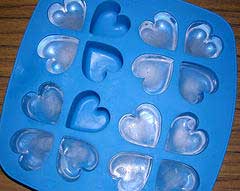Many homemakers are concerned that while their refrigerators work perfectly, the ice trays break very quickly. Both aluminum and plastic trays tend to crack or break, while stainless steel trays often have a bulging bottom.
 |
(Photo: static.flickr) |
The reason is quite straightforward: when water transitions from a liquid to a solid state (ice), its volume increases. Containers that are either non-elastic or poorly elastic cannot withstand the expansion of the water as its volume increases, leading to cracking, tearing, or bulging at the bottom.
In frost-free refrigerators, ice trays tend to deteriorate more quickly because water is cooled by cold air blown evenly into the ice-making compartment. As a result, the water in the containers freezes from the outside in. The center of the water mass freezes last. Once the water is completely frozen, it expands uniformly and tends to tear the container’s opening or bulge the base and surrounding walls.
In frost refrigerators, containers typically last longer because the water freezes starting from the bottom, which is in contact with the refrigerator first. Therefore, the expansion force is greatest at the top surface of the water mass.
This situation cannot be remedied. Therefore, to ensure that ice trays last longer, you should choose those made from materials with good elasticity. Plastic ice trays are a good option; when tested for flexibility, they do not crack or break easily, allowing for prolonged use.




















































